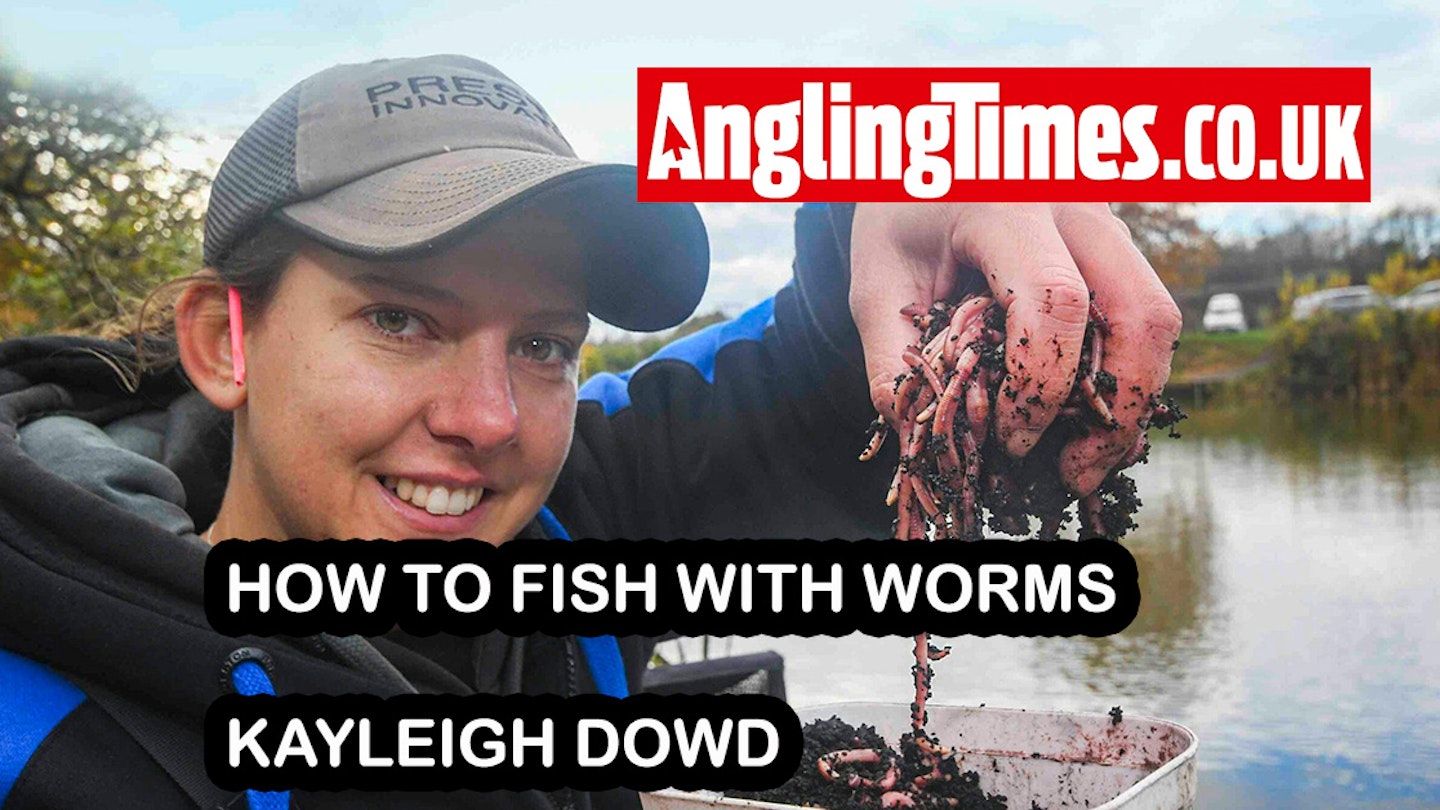England international and Preston Innovations-backed Kayleigh Dowd is among the elite and at this time of year she loves fishing for commercial silvers. If there was one bait she wouldn’t be without in that scenario it is worms. Over the years she has fine-tuned her approach to make it even more deadly. Tiny tweaks are the game changers and often the difference between scraping a few bites together and bagging a bulging net.
FANCY A DAY CATCHING A NETFUL OF SILVERS? CHECK OUT ONE OF THESE TOP VENUES FROM OUR WHERE TO FISH GUIDES.
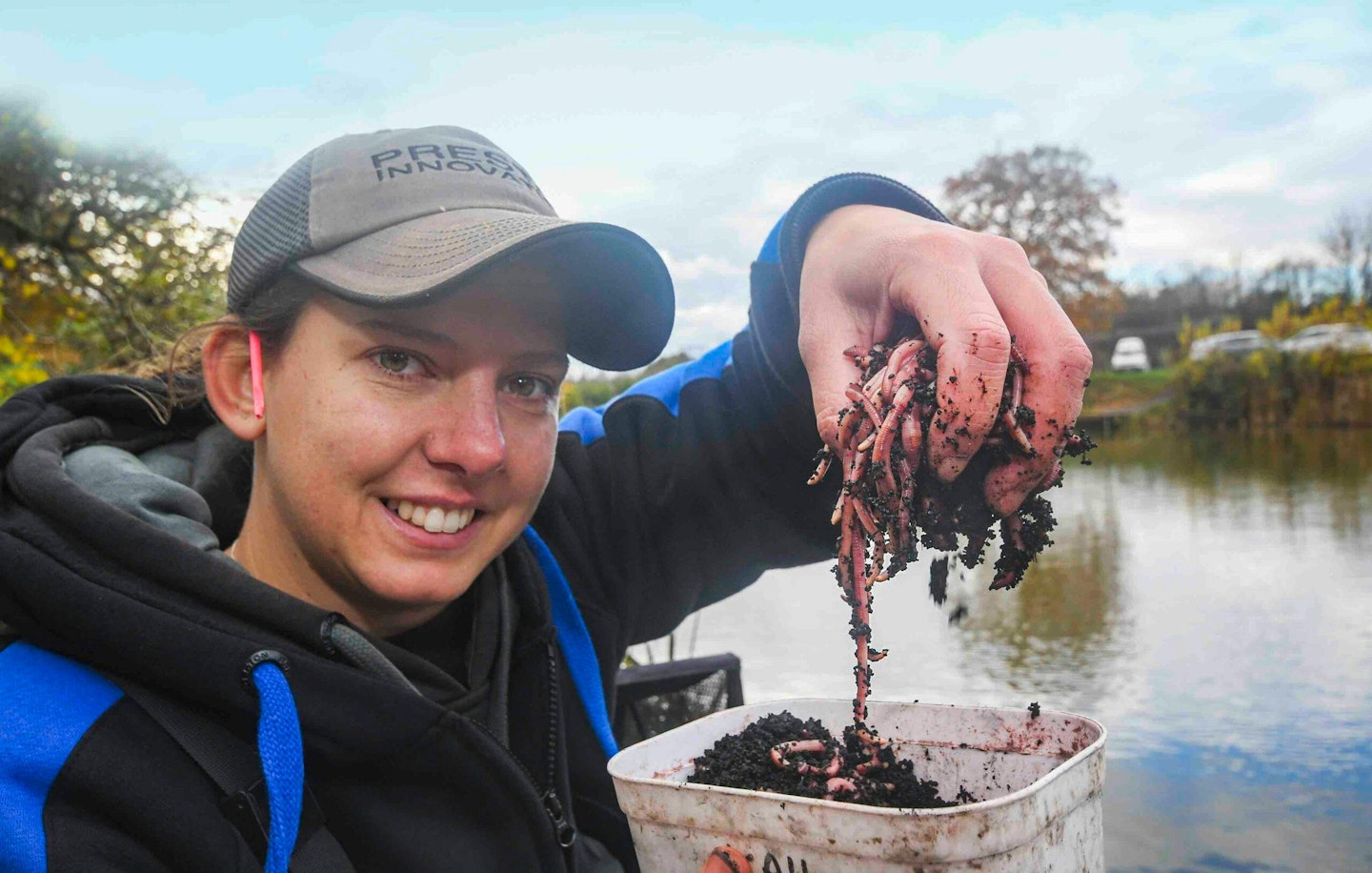
Rely on positive rigs
“Worms are quite a heavy bait and sink quickly. With that in mind, they are best fished on the deck using a shotting pattern that gets the hookbait down quickly. There’s no point making the hookbait fall as slow as possible when you're targeting fish are on the deck."
“I use a bulk of shot 18in from the hook with two smaller shot spread 6in apart just below. My favourite float is a Preston Innovations F1 Pellet as it has a reasonably thick tip that makes sure the rig remains anchored, no matter how much the worm is dancing around on the deck."
“When after a mixed bag of silvers on commercials, I use grade 7 Dura Slip elastic and 0.13mm mainline to a 0.10mm hooklength and a size 16 or 18 hook.”
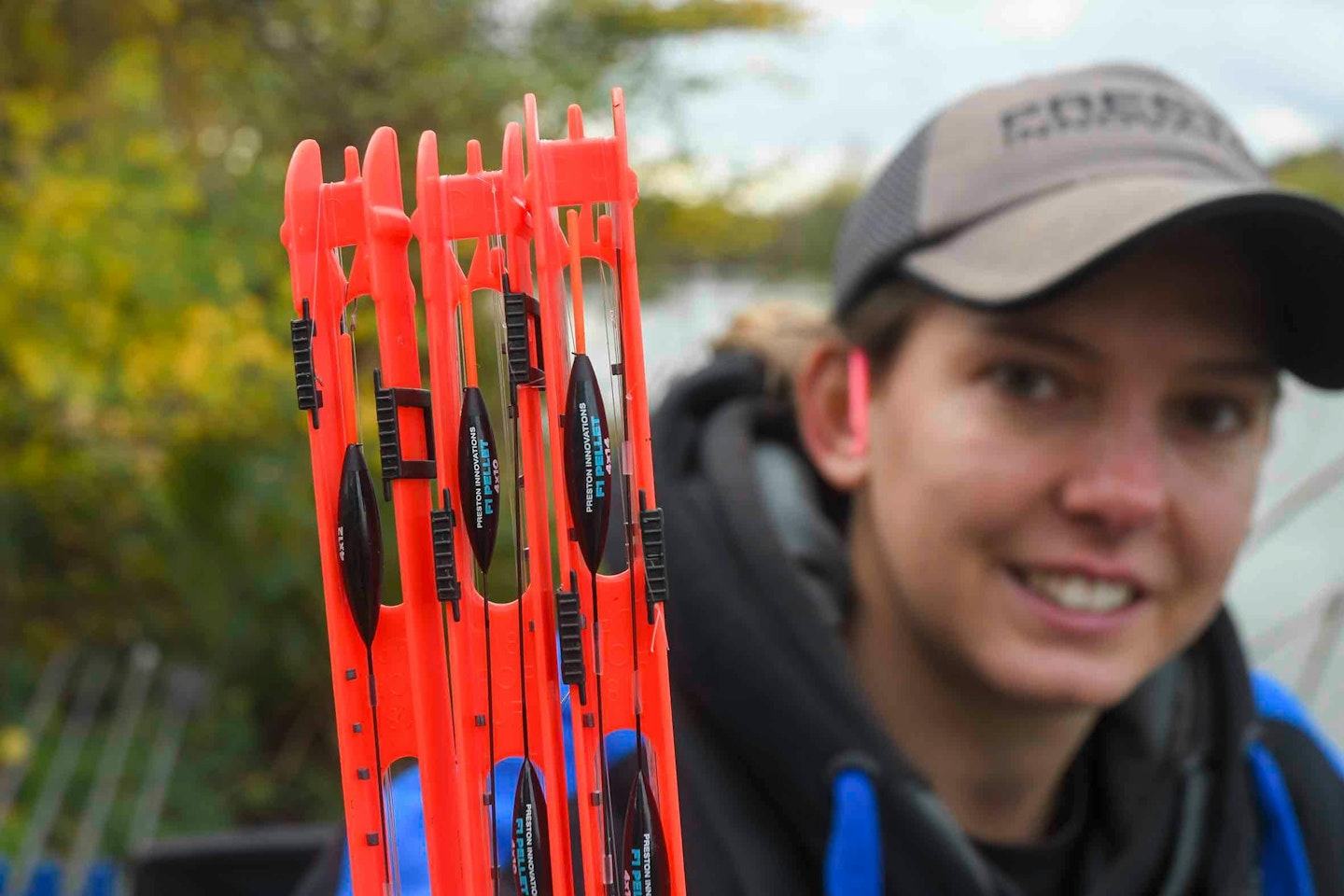
Working the worm
“Big perch love worms. They are a predatory species and instinctively strike at things that move. Abed of chopped worm will attract them and while they’ll eat some of it, they often sit over the top, almost guarding it. It often takes a sudden movement of the hookbait to tempt them into snapping it up so I agitate it every 30 seconds. This could be a slight lift of the float, dragging it one way briefly or laying in the rig again. Vary how you manoeuvre it to prevent the fish wising up to what is going on.”
THE BEST FISHING POLES MAKE MANOEUVRING A RIG FAR EASIER, OUR BUYERS GUIDES HAVE SOME STUNNING OPTIONS TO LOOK AT.
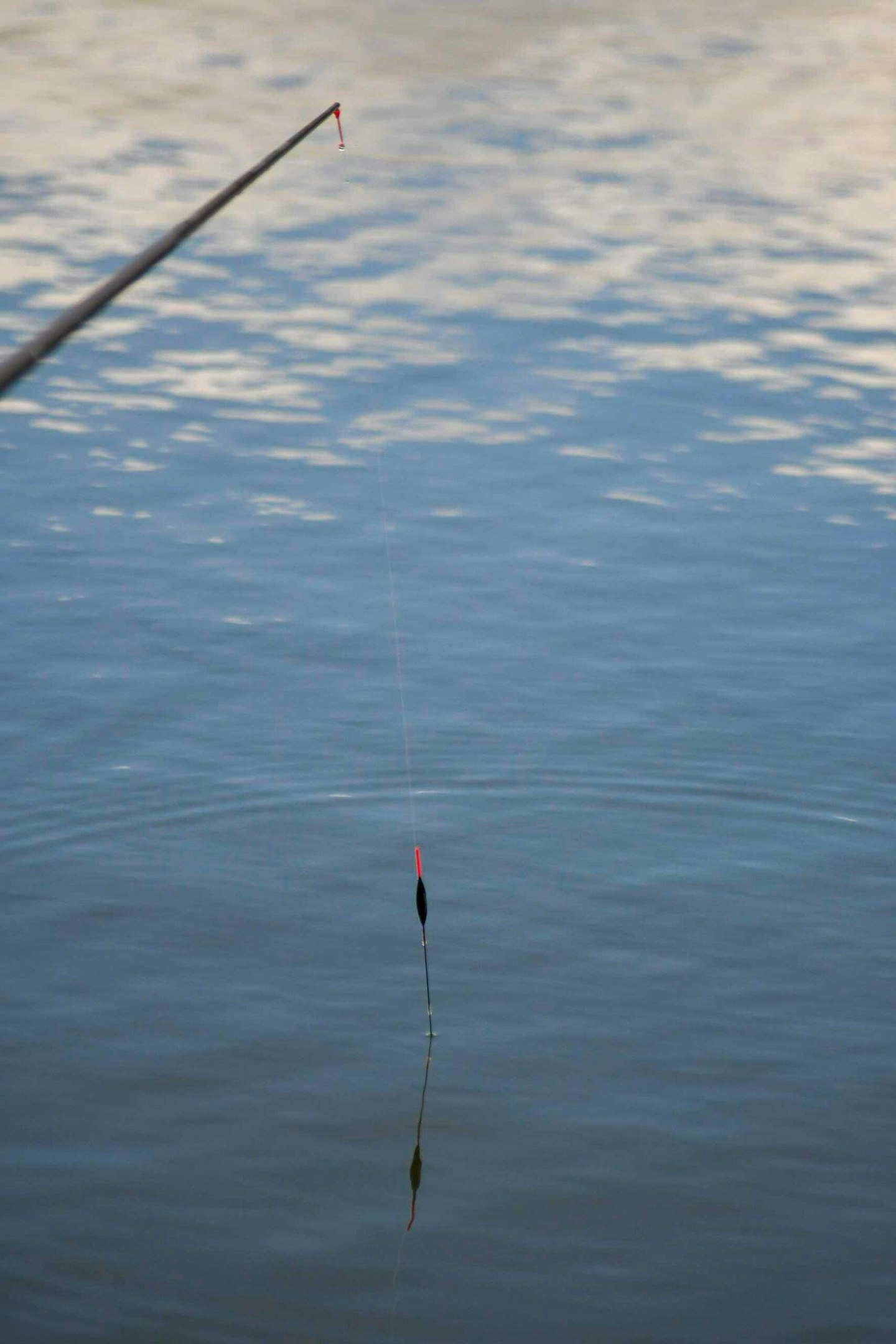
Give the scissors a workout
“I never feed whole worms for two reasons. Firstly, it fills up the fish really quickly and secondly, it would cost a fortune! Chopping them up creates a bait with less food content and makes your worm supply last longer."
“I always vary the degree that I chop the worms. If I am targeting quality fish that will have a bigger appetite, I give them a brief hack to make sure plenty of small pieces remain. When after roach or smaller fish, I chop them more vigorously, creating what isn’t far off a soup that is mainly scent and attraction.”
IT'S ALMOST IMPOSSIBLE TO FISH WITHOUT THE BEST FISHING GADGETS IN OUR ANGLING NOWADAYS.

Tiny top ups
“No matter whether my bigger doses of feed are introduced loose or in groundbait, I rely on frequent, tiny top-ups. These often come in the form of ‘marbles’ of groundbait and go in after every three fish on average. This makes sure the bed of feed remains intact, giving the fish something to graze on at all times. Each tiny marble may contain a thumbnail of worm and a couple of dead maggots, fed through a pole pot. It doesn’t sound much but it’s enough to hold a shoal in winter.”

Vary your hookbait size
“It is important to consider what you expect to catch before deciding what size of hookbait to use. If I want big perch or skimmers then a whole worm will help to avoid the attention of smaller fish. When mixed bags are expected and I want to catch everything that swims, half a worm does the job."
“Finally, a tiny pea-sized piece of worm, which is basically just the head, is a brilliant hookbait when loosefeeding maggots. I often throw casters 5m out on the pole to catch roach but use the same on the hook and tiny redfins attack the bait quickly. A tiny piece of worm is much tougher, making it harder for the juvenile fish to eat and therefore leaving it in place for the bigger fish to investigate.”

Try different worms
“Worms may all look similar but I usually carry two different types. The most commonly used and my first choice are dendrobaenas. They release lots of juices when cut up, making them ideal for both loosefeed and hookbait. They aren’t the most active of baits, however, and if I want to make my hookbait stand out, I nip a red worm on to the hook. They wriggle a lot and if a fish is grazing over a bed of chopped worms, this is likely to be the first thing they’ll spot and gobble up.”
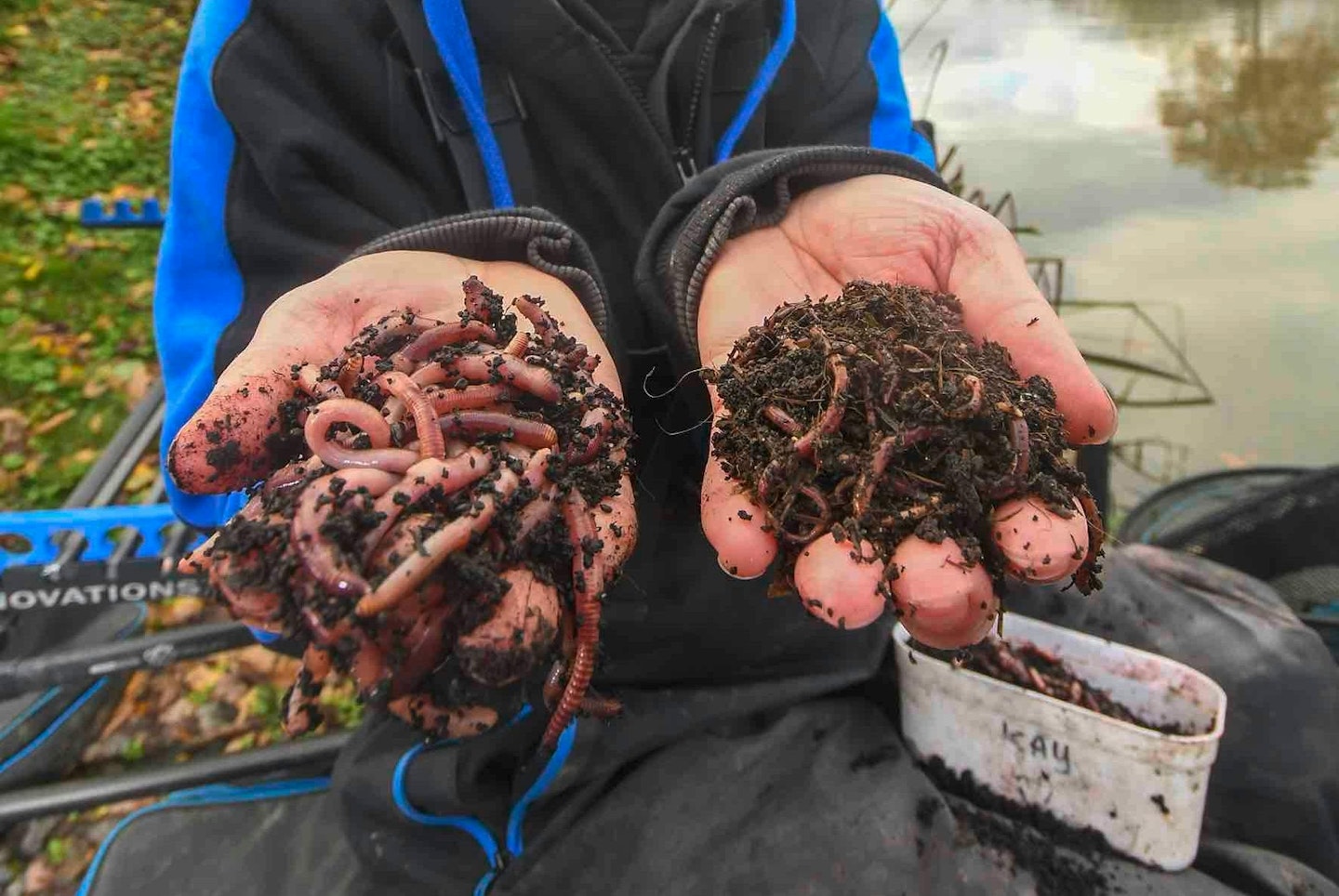
Feed two lines
“There are days when worms don’t work instantly. Instead of gambling, I’ll feed a swim to my right or left that includes worms and then another directly in front of me with other baits."
“The fish can take time to switch on to the amino acids in the worms and until they do, other offerings can be more effective. I’ll keep topping up and trying the swim with worms and once that kicks into life, I also introduce worms on the other spot. At that point I’d feel confident of a solid response and almost instant bites on worms.”
SOME DAYS IT PAYS TO FISH FURTHER OUT, MAKE SURE YOU HAVE THE BEST FLOAT RODS FOR SILVERS, TO MAKE SURE YOU CAN REACH THEM.
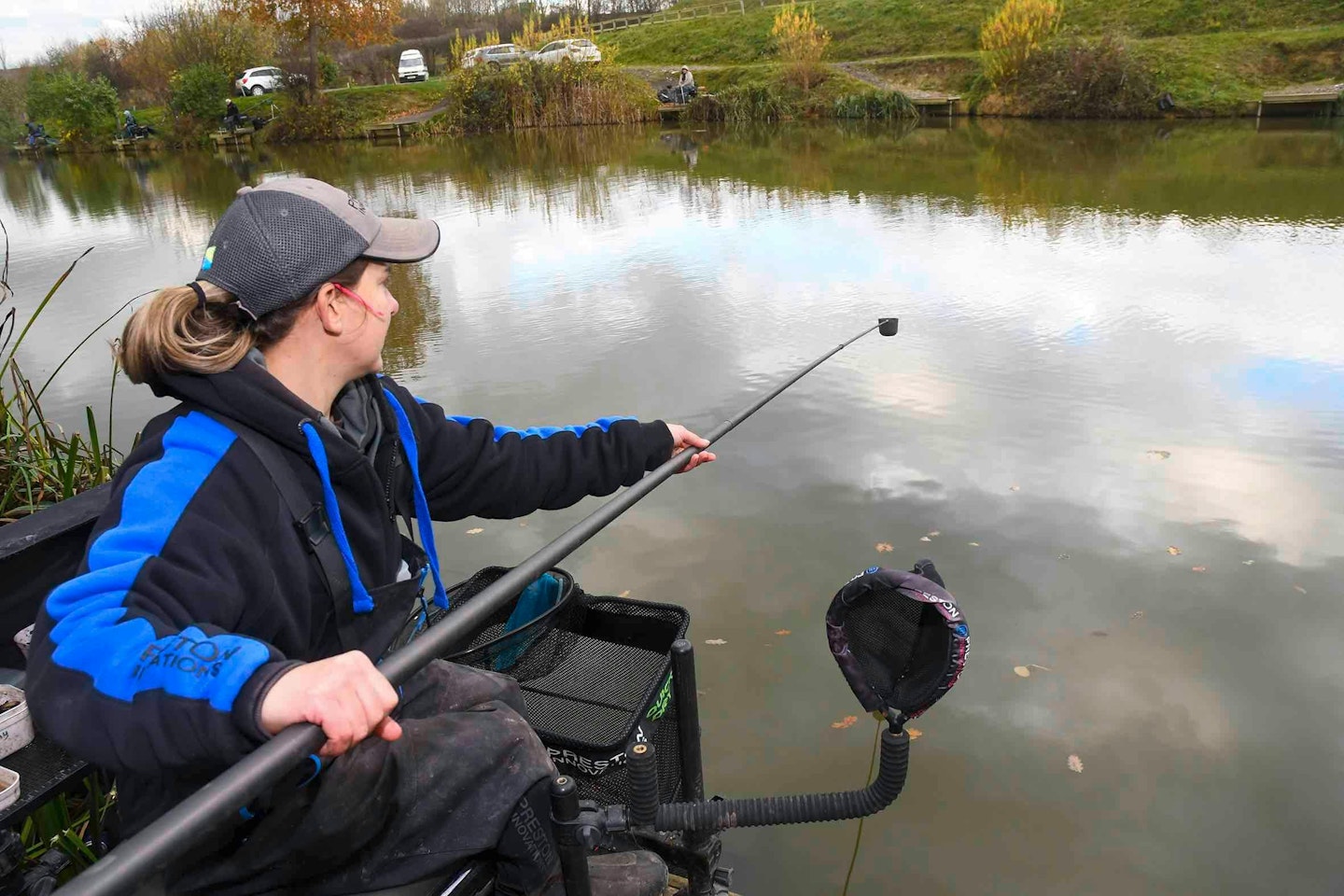
Consider the depth
“How I feed my worms is often dictated by the depth. In less than 6ft of water I often feed them neat. This creates a column of attraction and I would feel confident that the contents would get to the bottom where I introduce them. The only exception to this is in windy conditions or if there is a heavy underwater tow that would lead to my loosefeed drifting off track."
“In deeper water or less than ideal conditions, I use groundbait as a carrier. My favourite mix on commercials is Sonubaits F1 Dark and Thatchers in a 70/30 ratio. If it is really cold I will even go to an 80/20 or 90/10 ratio because F1 Dark has very little food content."
WHETHER YOU'RE POLE OR FEEDER FISHING, MAKE SURE YOU CHOOSE THE RIGHT GROUNDBAIT, OUR GUIDES WILL HELP YOU DECIDE.
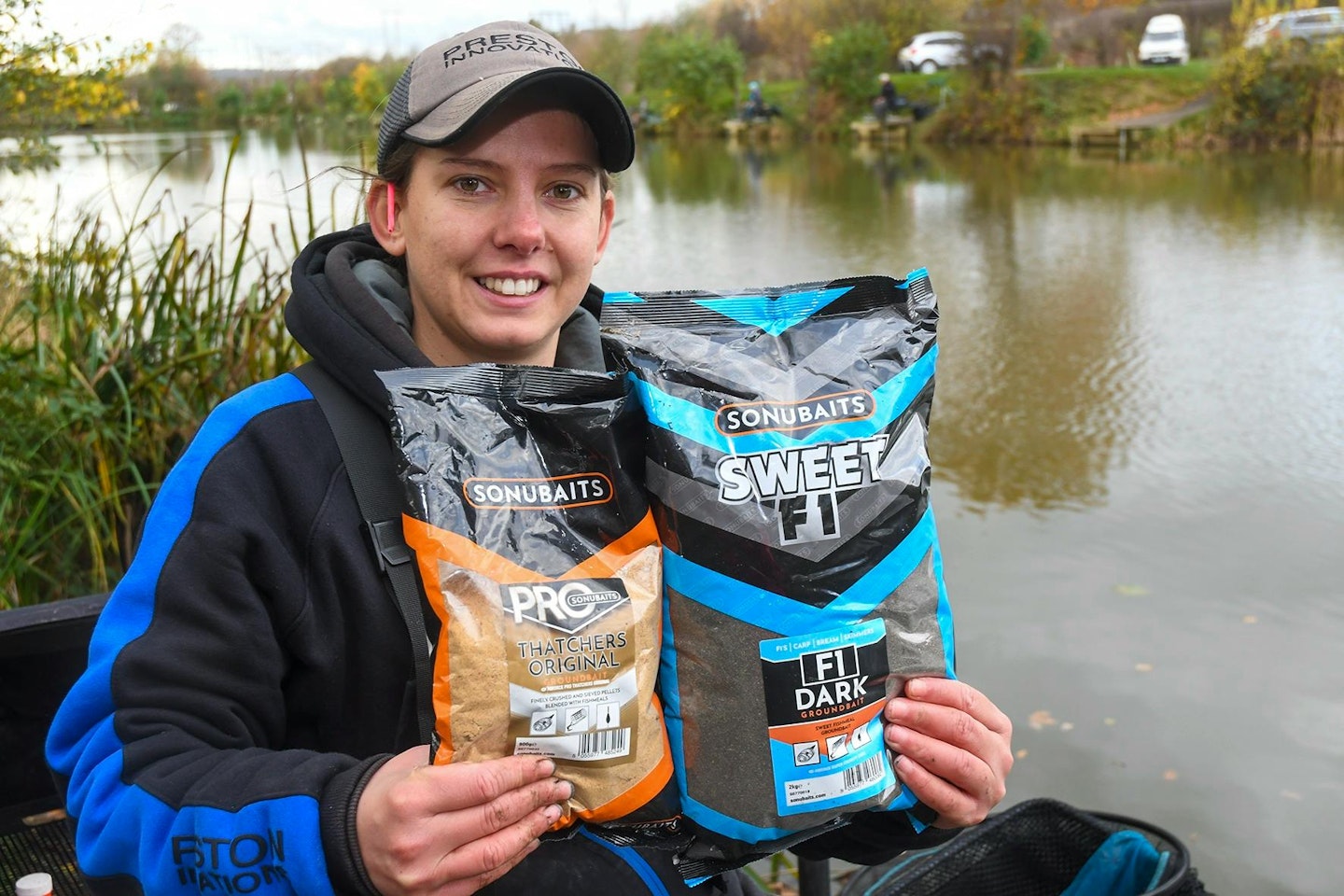
Dot it down
“Bream, roach and ide are just some of the species you are likely to encounter when fishing with worms and they have one thing in common – they can be extremely finicky feeders in winter. You have to choose the right float but if you have too much of the float tip showing, you might not even see the delicate movement when a silverfish tentatively picks up the hookbait. However, if you dot the tip down, you’ll notice it has vanished as a result of that movement and know when to strike.”
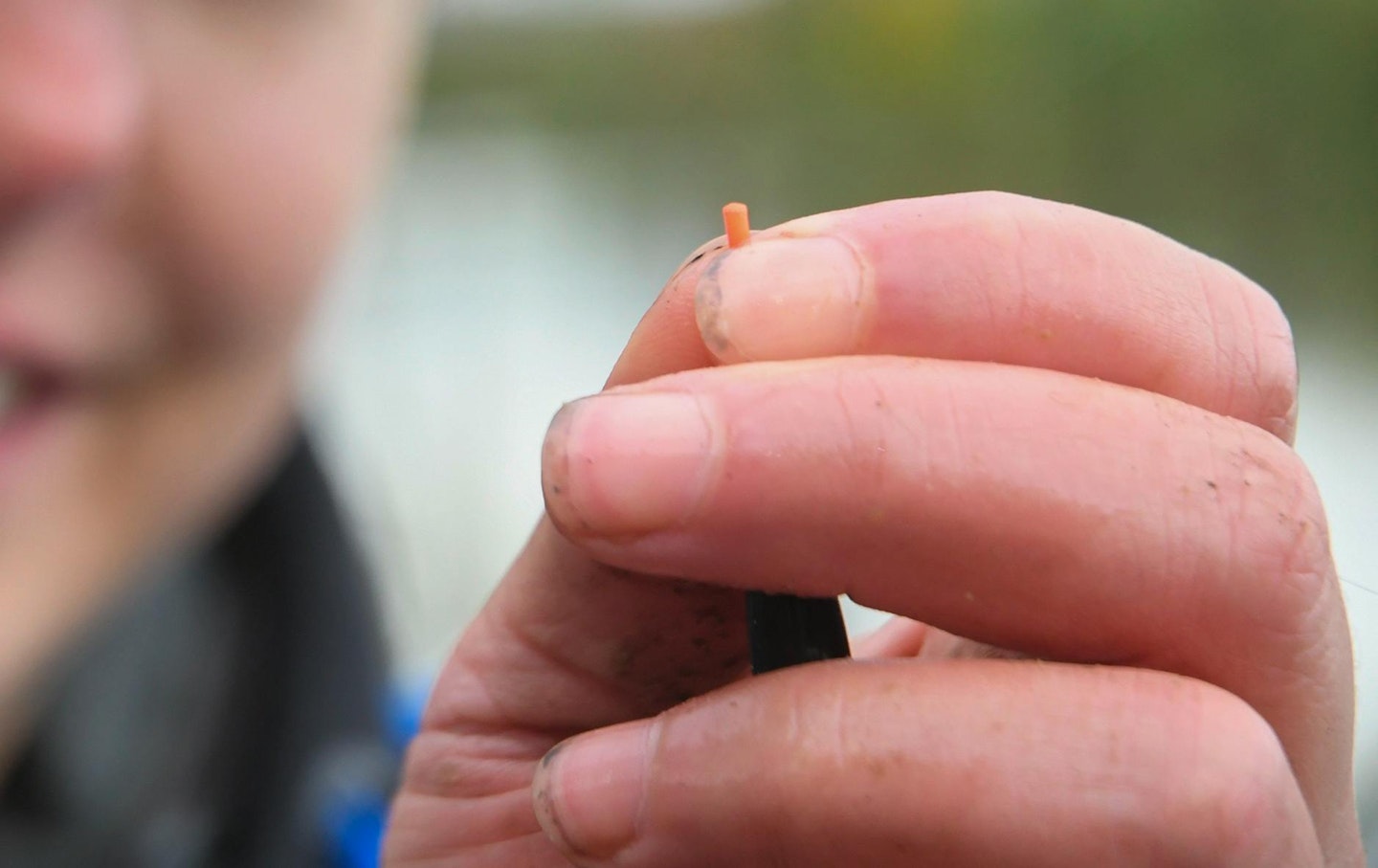
Feed a fake meal
“Feeding is all about attracting as many fish as possible without filling up the shoal. One way of doing this is including Sonubaits Fluoro Rocks with my chopped worm or groundbait. They have zero food content but are bright and fish mistake them for tiny bits of worm, maggots or pinkies. I’m convinced they pick them up, realise they aren’t food and spit them back out. They do this until they find something desirable to eat and, with very little else around, they are forced to take the hookbait.”
THERE ARE LOADS OF ADDITIVES, LIQUIDS AND FLAVOURINGS TO ENHANCE YOUR BAIT, OUR BUYERS GUIDES CONTAIN SOME OF THE BEST TO TRY RIGHT NOW.
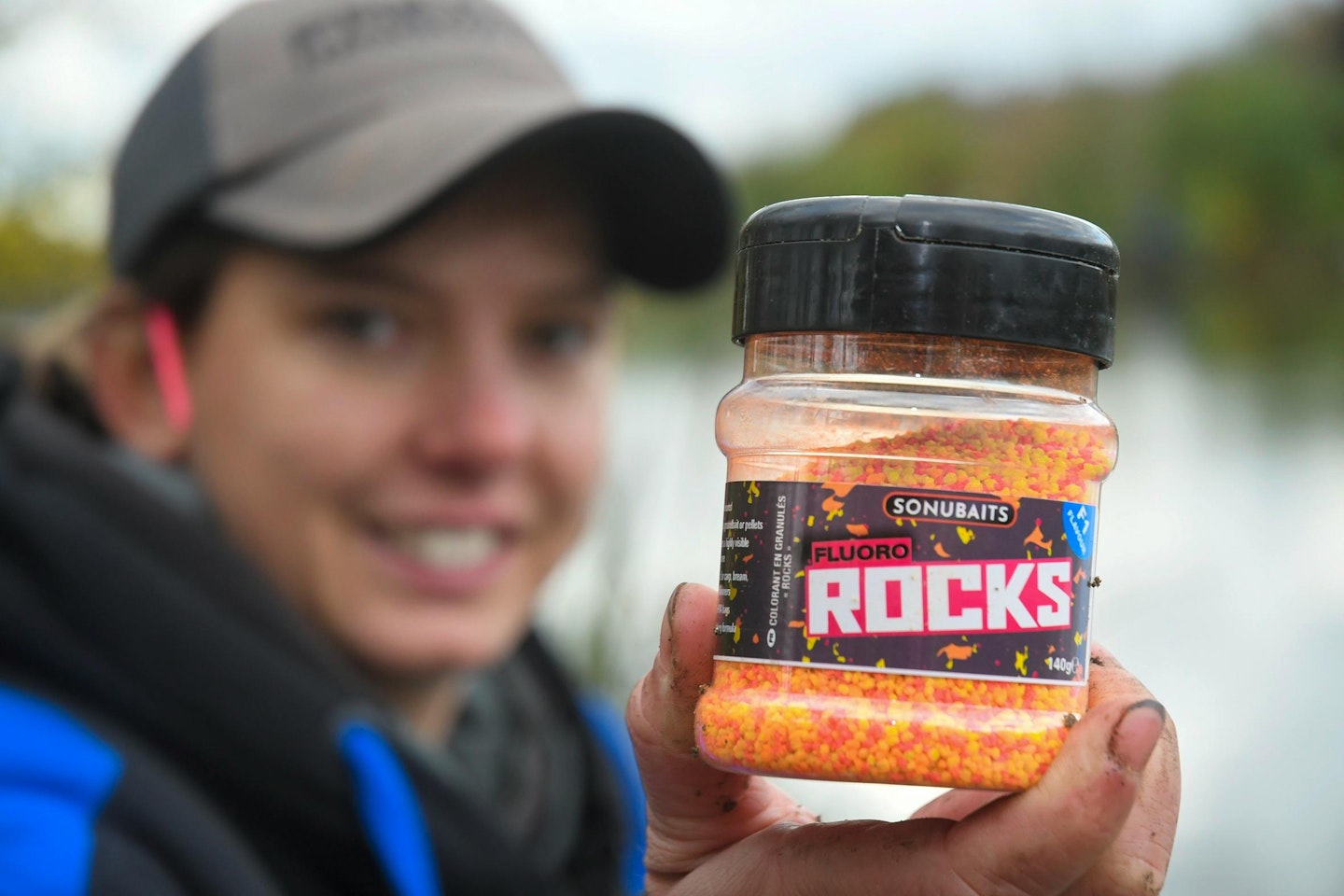
This page is a free example of the amazing content Angling Times Members get every single week. Becoming an Angling Times Member gives you access to award-winning magazine content, member rewards, our back issue archives, bonus content and more! Join our fishing community and find out more today!
